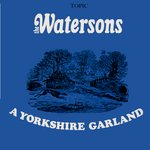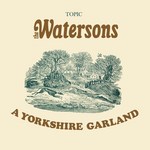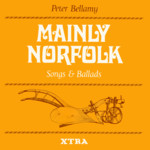> The Watersons > Records > A Yorkshire Garland
The Watersons: A Yorkshire Garland
 |
A Yorkshire Garland Topic Records 12T167 (LP, UK, 1966) |
 |
Recorded by Bill Leader
Woodcut on sleeve by Thomas Bewick
Ten of the fourteen tracks on this record were re-released in 1994 on the Topic CD Early Days. The Pretty Drummer Boy was re-released in 1999 on Lal & Norma Waterson’s CD A True Hearted Girl. Sorry the Day I Was Married and The Yorkshire Tup were re-released in 1999 on the CD Mike Waterson. The remaining track, The Morning Looks Charming, was finally reissued in 2004 on the Watersons’ 4CD anthology Mighty River of Song.
Musicians
In 1966 the Watersons were siblings Mike, Norma, and Elaine (Lal) Waterson, and their second cousin John Harrison.
Tracks
Side 1
- The Poacher’s Fate (Roud 793; Laws L14) (1.38)
- The Morning Looks Charming (Roud 580) (2.07)
- The Pretty Drummer Boy (Roud 226; G/D 1:182; Henry H497) (2.26)
- The Tour of the Dales (4.30)
- Willy Went to Westerdale (Roud 2792; TYG 1) (1.55)
- I’anson’s Racehorse (Roud 176) (3.14)
- The Ploughboy (The Khaki and the Blue) (Roud 163; TYG 32) (3.03)
Side 2
- The White Cockade (Roud 191; TYG 2) (3.36)
- Sorry the Day I Was Married (Roud 1561) (1.25)
- Ye Noble Spectators (Roud 610; TYG 83) (3.36)
- Stow Brow (Roud 185; Laws K18; G/D 1:20; TYG 7) - Lal (3.21)
- The Wanton Wife of Castlegate (Roud V14112) (1.41)
- The Yorkshire Tup (Roud 126; G/D 3:645; TYG 59) (1.44)
- The Whitby Lad (Roud 261; Laws L16; G/D 2:260; Henry H691) (3.14)
All tracks trad. arr. Watersons pub Mole Music Ltd.
Sleeve Notes
The Watersons come from Yorkshire and they’re proud of it. So they thought they would make this, their third LP, a record of Yorkshire songs. But it’s more than simply an anthology of local pieces. The songs are too good for that. All these versions come from Yorkshire, sure enough, but most of them are songs that were spread all over the countryside because singers and listeners found them fascinating. In some countries, the folk music is in clearly marked regional styles, so that passing from one district to another is almost like crossing the frontier into a foreign land, so different are the musics. That’s usually a sign of isolation, of poor communication between one area and another. Not so with England. For centuries our roads have been too good, our population too mobile for the best folk songs to stay at home. Outside of the north-east (where a certain peculiar kind of melody has been stabilised by the use of the Northumbrian small-pipes) we have no clearly differentiated regional music-dialects. A Lancashire version of a tune may sound much like an Essex one, the run of a Lincoln song-text may be very similar to one in Devon. Usually, if a song remains tied to a locality it’s because outsiders haven’t found it interesting enough. Not always though; one or two of the pieces on this record are strictly local and have it in them to charm the wide audiences. Still, we repeat, most of them are songs of nationwide currency. But they are Yorkshire versions; and the Watersons are Yorkshire men and women (two of each), so they sing them with a special affection.

